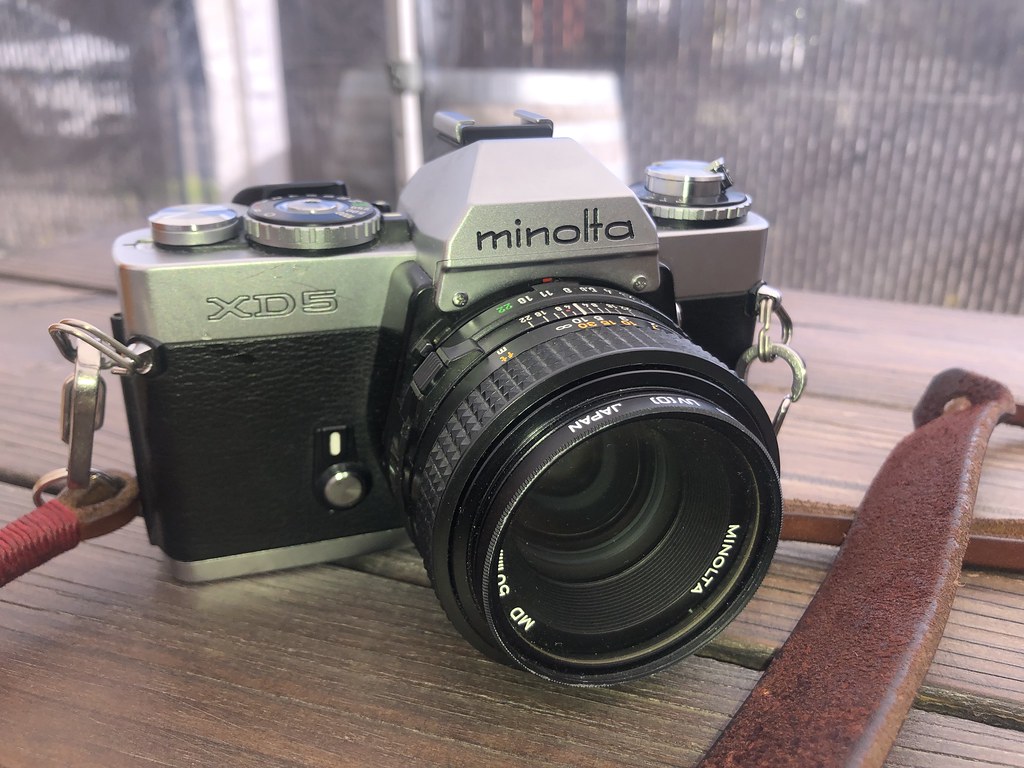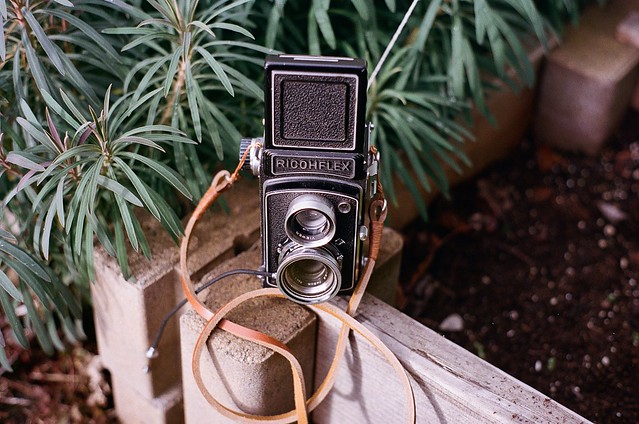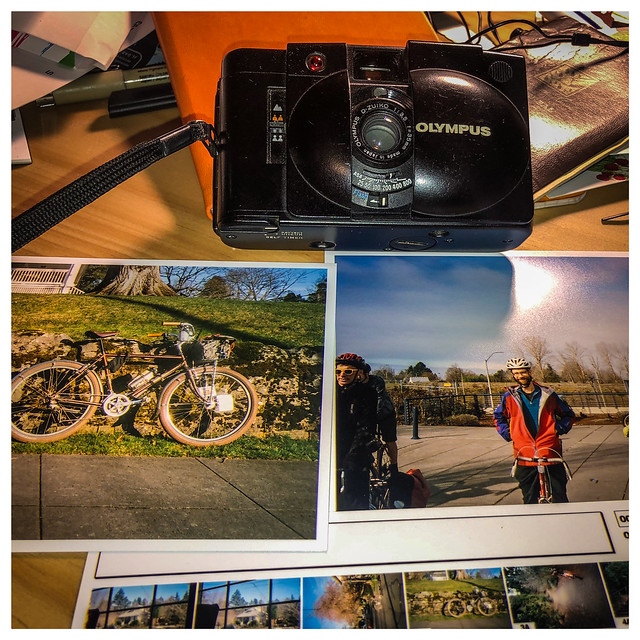I’m not much of a joiner when it comes to internet stuff. Y’know, whatever “thing” there is to do on the internet, the thing that’s shared amongst your Instagram/Twitter/What have you friends, usually prefaced by a “figured I’d give it a try.” Recently it’s been the whole “you rendered by AI”. I just can’t get into these things, especially since I realize that many of these apps people are using are a way to collect people’s data.
But this time I decided to join in. It needs no app, just the ability to write a blog post. I saw that Jim Grey had done a post about his favorite three cameras from the past year, which was instigated by Stephen Dowling at Kosmo Foto. I’m not a big enough “photo blogger” to come under the radar of these kings of things, but I decided to get in on the game. (Honestly, I’m sure many people who come here thinking I’m a “photo blog” (thanks, Jim!) get confused about my talk on bikes and stuff. Sorry!)
Trying to figure out what my favorite cameras are is not easy. I’ve worked hard over the last three years to have a diverse stable, and each individual camera has a use. But there definitely was three cameras over the past year that I either used the most, had the most fun with, gravitated towards, inspired me, or have been elevated in my own head. Below are the three cameras that made the cut, and why.

1. Minolta XD5
This was a new to me camera this year, purchased in April. The XD5 is the little brother to the flagship Minolta XD/XD7/XD11, the circa 1977 SLR that was the first to feature both aperture and shutter priority modes in addition to full manual exposure control. The XD5 is just as capable as the XD, but lacks some bells and whistles like a shutter blind. And because it lacks those extras and isn’t as well known, buying a used XD5 is cheaper. I paid about $80 plus shipping for mine, one that was advertised as in working condition.
I’ve shot extensively with it since getting it. I really like my Minolta SR-T 101, but it’s a beast of a camera. The XD5 is smaller and weighs less, about the same weight as my Minolta Hi-Matic 7s rangefinder (and yes, with the lens on!) It feels good in hand, the nice leather cover doesn’t hurt. Because it’s so compact, I’ve taken it along with me in my plane/train travels, something I wouldn’t consider doing with the SR-T 101.
I usually keep it in aperture priority mode. This is useful on bike rides, when I have it strapped around my shoulder and want to quickly take a photo. Having shutter priority is also good, it’s especially useful in low light situations when I want to make sure the shutter speed isn’t too slow for handheld use.
It’s worked with no issue since getting it. I will get it CLA’d at some point, though. I want to get many more years of happy use out of this machine!
Read more about my Minolta XD5 here. A full gallery of photos from the XD5 is below.

2. Ricohflex Dia
Before picking up this twin-lens reflex camera in spring, I was pretty lukewarm on medium format. It took a quality 120 camera to remedy that. Ricoh’s offerings in TLR aren’t as well known nor as popular than those from Rollei, Yashica, or Minolta. Because of that, you can find them for much lower prices. The Dia, or Diacord series was Ricoh’s upscale TLR offerings, using a moving lens board vs. the “geared lenses” that were found on the cheaper Ricohflex I used to have. I spent the most money yet on a camera, about $130, to get a working and refurbished one shipped from Japan.
After using mediocre medium-format cameras before, using the Diacord is like night and day. I can actually see things on the focusing screen, and I get sharp images. Plus, the camera looks cool and is fun to use (at least after I figured out how to advance the film properly.) Now I can see what the fuss is over medium format!
The Diacord is not a daily driver by any means–it’s the most “process” of any camera I own, and the limited exposures of one roll of film (just 12) means 35mm will be what I reach for the most. But there are times where I want to reach for the Diacord instead.
Read more about my Ricohflex Dia here. A full gallery of photos from the Diacord is below.

3. Olympus XA2
This is one of the cameras I’ve owned the longest, but still use the most. Gifted to me in February 2020, the XA2 is the little brother to the main XA. They’re both compact as all get out and have sliding clamshell covers, but the XA2 has a slightly slower lens and offers zone focus and no exposure control. Perfect for a point-and-shoot!
Because of its go-anywhere design, I usually bring the XA2 “in addition to” whatever my main camera for an outing is. Most often the Olympus XA2 is loaded with color negative film (usually Fuji C200 or Kodak Color Plus, when I can get that), though it has proven itself with black and white. (I haven’t tested slide film though.) And the XA2 is the perfect camera to bring when I don’t know if I want to bring a camera. Oh yeah, I love the photos it takes!
Read more about my Olympus XA2 here. A full gallery of photos from the XA2 is below.
Editor’s Note, 31 December 2022: Below is the list of the other bloggers who participated in this “3 Cameras” challenge. Please let me know if there is anyone I missed.
- Alan at Canny Cameras: The Three that went – 3 very different travel film cameras
- Peggy at Camera Go Camera: New for 2022 – My Favourite Film Camera Experiences This Year
- Aly at Aly’s Camera Vintage Alley: 3 Cameras from 2022
- Jim at Down the Road: Three Cameras 2022
- Alex Luyckx: New for 2022
- Mike at Mike Eckman Dot Com: 3 Outstanding Cameras from 2022
- Eric at Aperture Preview: Three Other Cameras of 2022
- Johnny Martyr: Trois Cameras de 2022
- Jim Graves: My Top Three Cameras of 2022
- Keith Devereux: Three Cameras from 2022: My favourite experiences this year
- Dan at Going Lomo: My Top 3 Film Cameras of 2022




Nice. The Three Cameras Project is spreading!
Reblogged this on Bikes and Film Cameras Club.